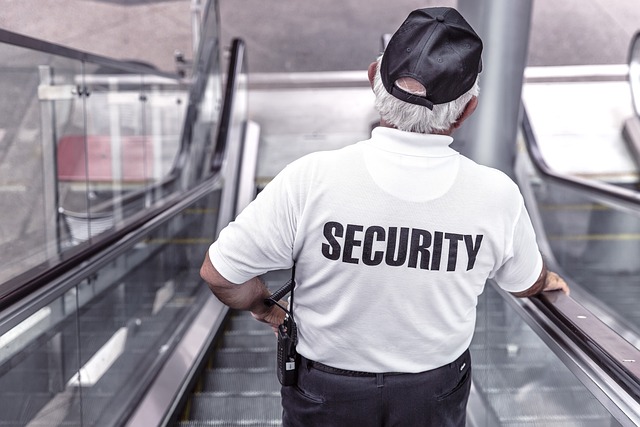Thorough background checks for security guards and officers are essential to maintain robust security systems. These screenings involve verifying employment, criminal history, and references to ensure trustworthy individuals protect sensitive areas like financial institutions or large events. This process is critical for industry compliance, enhancing protection, and fostering public trust in the security industry. By delving into education, work history, and criminal records, employers implement a stringent procedure to uncover potential risks and maintain a competent security workforce aligned with evolving protection standards.
In today’s world, ensuring the safety and security of our spaces is paramount. Background checks for security personnel, especially those tasked with premises protection, are not just recommended but essential. This article delves into the critical aspect of security guard background screening and safety personnel verification, exploring why it’s a cornerstone of the security industry compliance. From understanding the importance to implementing best practices, we’ll navigate the process, covering security workforce screening methods and their role in fostering a safe environment.
- Understanding the Importance of Security Personnel Background Checks
- The Process of Security Guard Background Screening
- Ensuring Safety Industry Compliance and Best Practices
- Verifying Safety Officer Credentials for Premises Protection
Understanding the Importance of Security Personnel Background Checks

In today’s world, where the safety and security of individuals and property are paramount, ensuring that security personnel are reliable and trustworthy is more critical than ever. Background checks for security guards and other safety officers are not just a regulatory requirement but an essential component in maintaining a robust security system. These thorough checks, often referred to as security guard background screening or safety personnel verification, play a pivotal role in safeguarding our spaces by weeding out potential risks and ensuring compliance with industry standards.
The process involves verifying the credentials of each security officer, delving into their criminal history, employment records, and personal references to identify any red flags. This includes checking for previous convictions, outstanding warrants, and any conduct that might pose a threat to the premises they will be protecting. Such measures are crucial in maintaining the integrity of the security industry and fostering public trust, especially in high-risk environments like financial institutions, government buildings, or large events. Effective security workforce screening ensures that only qualified and trustworthy individuals are granted access to sensitive areas, ultimately enhancing the overall protection of people and assets.
The Process of Security Guard Background Screening

The process of Security Guard Background Screening is a multifaceted and stringent procedure designed to ensure the safety and security of both personnel and premises. It involves several critical steps, including extensive record checks, verification of credentials, and in-depth interviews. This thorough screening aims to uncover any potential criminal history or misconduct that could compromise the integrity of the security industry and the protection of sensitive areas.
Safety personnel verification is paramount in the security industry compliance framework. Employers conduct comprehensive background checks on candidates, delving into their employment history, education, and any relevant certifications. These checks also encompass verifying the validity of safety officer credentials, ensuring that those hired possess the required skills and qualifications. This meticulous process is a crucial step in maintaining a robust security workforce screening system.
Ensuring Safety Industry Compliance and Best Practices

In the security industry, ensuring safety and compliance is paramount to maintaining a robust and trustworthy workforce. Background checks for security personnel are an indispensable tool in this regard, as they facilitate thorough verification of potential employees’ credentials. These rigorous processes involve comprehensive screening of criminal histories, employing advanced tools and databases to unearth any relevant information that could impact the safety of premises and individuals. By implementing stringent background screening methods, companies can mitigate risks effectively and uphold their commitment to security industry compliance.
Best practices in security personnel verification extend beyond simple background checks. They encompass a holistic approach that includes verifying qualifications, certifications, and references. Additionally, regular re-screening and ongoing monitoring of existing staff are crucial to accounting for changes in an individual’s background. These measures ensure that the security workforce remains reliable, competent, and aligned with the evolving standards of premises protection.
Verifying Safety Officer Credentials for Premises Protection

Verifying the credentials of safety officers is a vital step in ensuring comprehensive premises protection. Background checks for security personnel, particularly those handling sensitive areas, are essential to maintain a safe and secure environment. These checks involve an in-depth review of the officer’s history, including their education, work experience, and any criminal records or legal issues. By conducting thorough security guard background screening, organisations can identify potential risks and ensure their workforce is compliant with industry standards.
Safety personnel verification goes beyond basic qualifications. It includes cross-referencing employment histories, verifying references, and checking for any outstanding warrants or legal impediments that might compromise the officer’s ability to perform their duties effectively. This process helps create a robust security workforce screening system, fostering trust and confidence in the organisation’s commitment to safety. Regular updates on these checks are also crucial, as it allows for continuous compliance with evolving legal frameworks and industry best practices.
